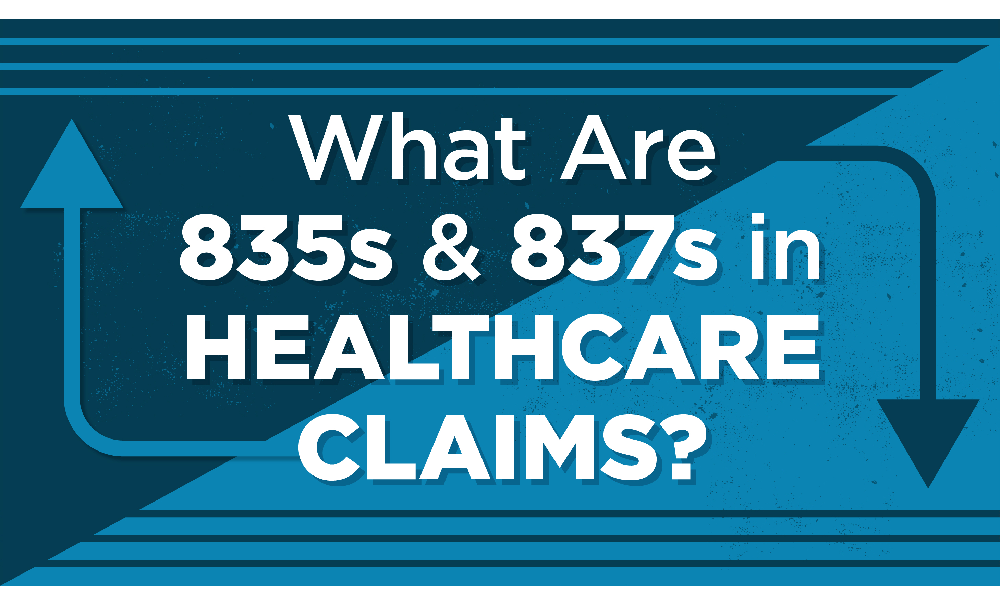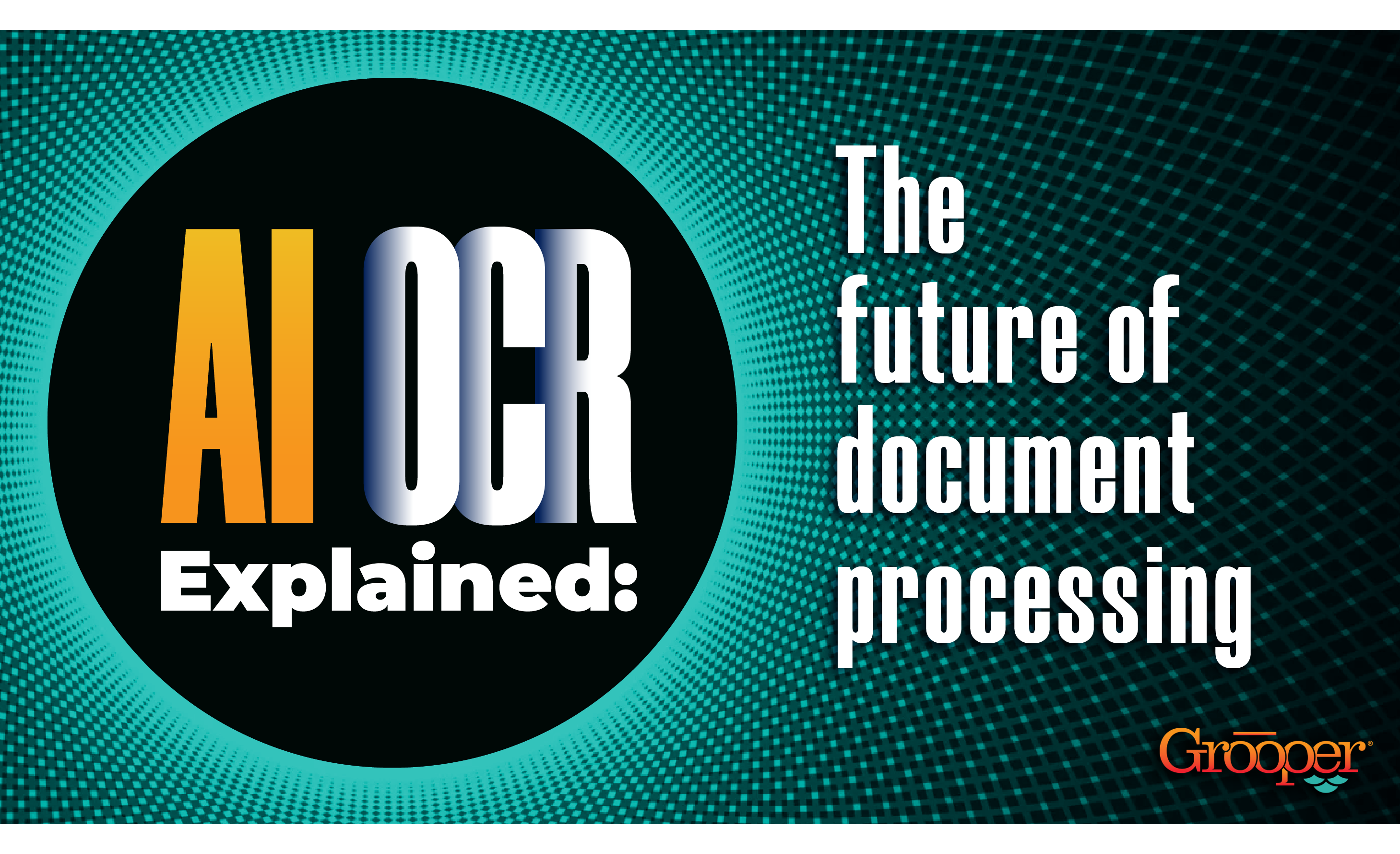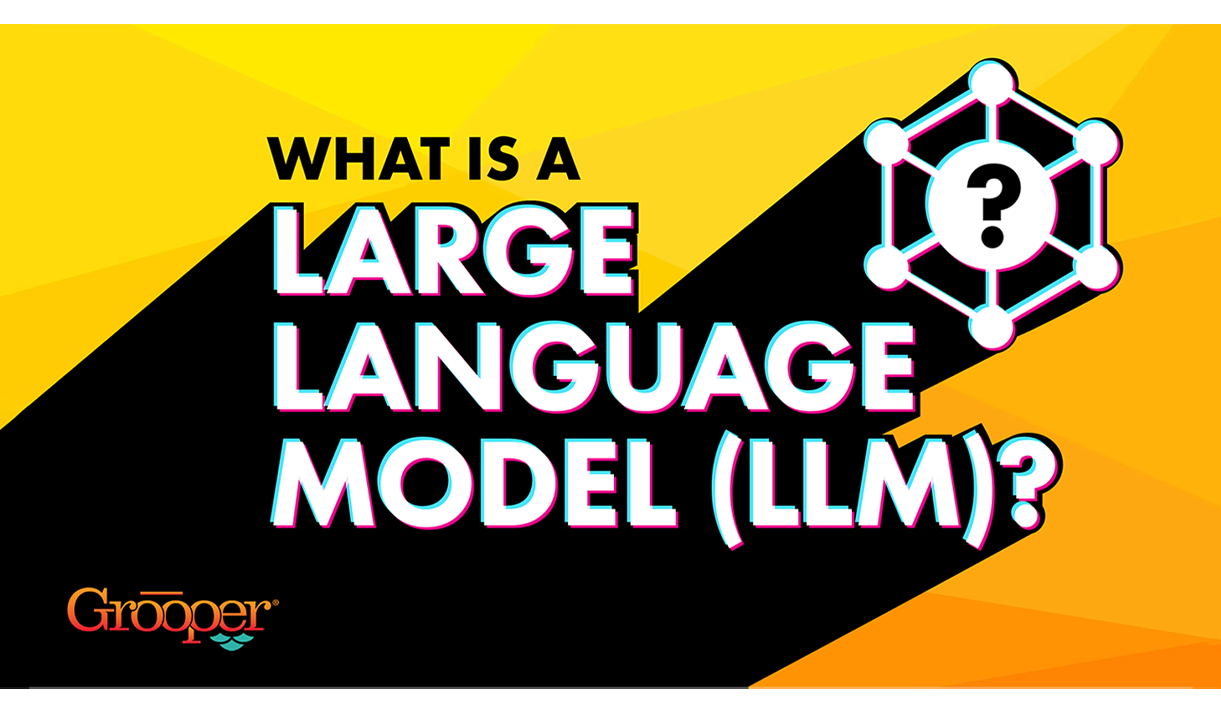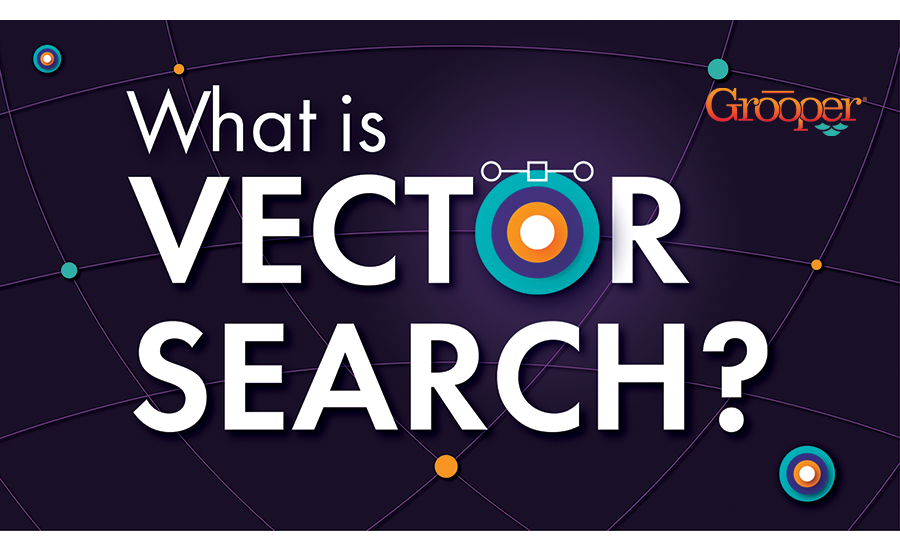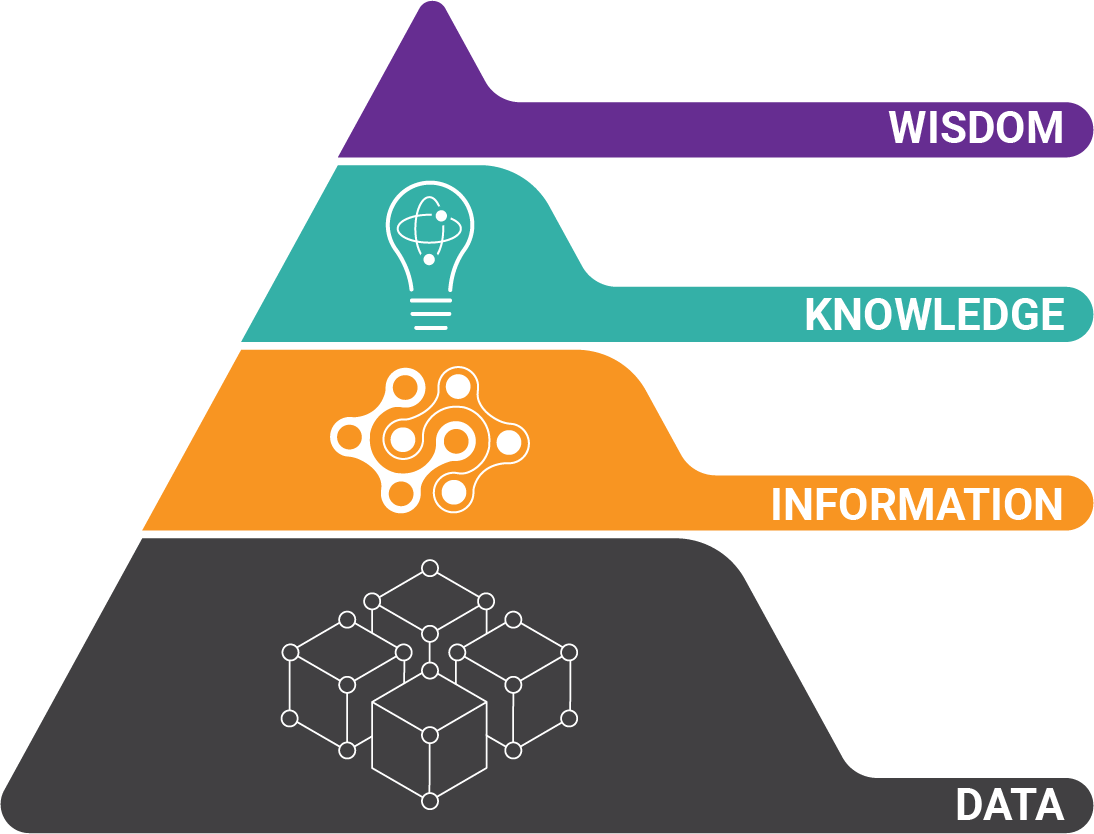Every organization wants to streamline their payment processing.
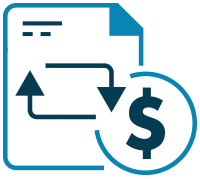 But for some industries, like healthcare providers, there's a problem: receiving and recognizing their revenue is far easier said than done.
But for some industries, like healthcare providers, there's a problem: receiving and recognizing their revenue is far easier said than done.
Why? Because insurance companies have to know what treatment a patient received, and that data is complicated. It takes a lot of time, often using old-fashioned, slow, manual processes, to get the data correct so that the right amounts and codes are presented to both the patient and the provider.
Slow, laborious manual data entry has been an essential part of the healthcare revenue cycle for decades.
But what if there were modern technologies that had intelligent ways to extract and deliver that information to all interested parties rapidly? Then:
- Insurance companies could understand patient claims and treatments weeks faster - and more accurately
- Healthcare providers (like hospitals and clinics) would receive payments weeks faster
- Patients would have their treatment claims finalized far faster
Well, intelligent solutions for rapid 835 and 837 processing do exist! Let's learn about them and how they work.
Table of Contents:
- What is the healthcare remittance process?
- What are the problems with the healthcare claims process?
- What is an 835 file?
- Solutions for 835 & 837 conversion
- What is an 837 file?
- What are the differences between 835 and 837 files?
Get Our Free Case Study on 835 / 837 Data Conversion!

We are the experts at EDI document processing and conversion. In fact, we are empowering Fortune 500 companies to save enormous amounts of time and improve revenues through EDI conversion. We can help you too!
Discover how a leading healthcare clearinghouse company automated their EOB conversion with EDI 835 and 8237 files by using AI. How much faster is their RCM? Get the Case Study:
What is the Healthcare Claims and Remittance Process?
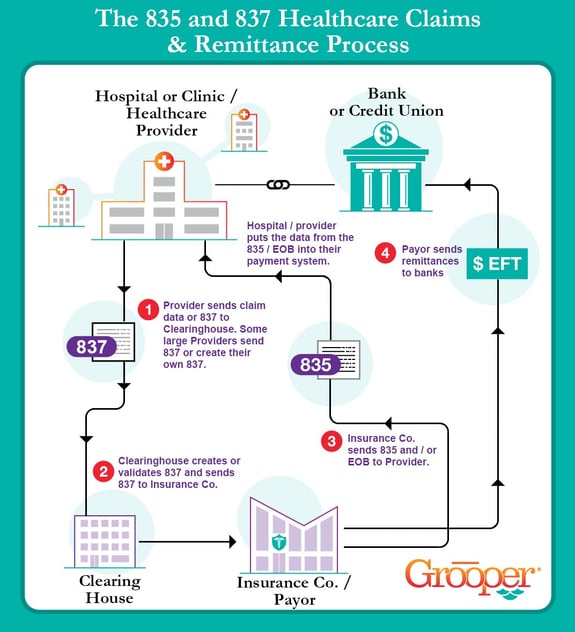
This process begins when patients with insurance coverage receive medical services or procedures. Then, a healthcare claim is made by the health provider (hospital, clinic, or physician) to the payor (insurance company) to get a remittance (payment) back that matches the terms of the insurance contract.
All this is for the doctor (the healthcare provider) to get paid for the services provided during an office visit (or any other medical procedure).
While this might sound simple...it's not.
Step 1: Provider Creates and Sends Claim Data
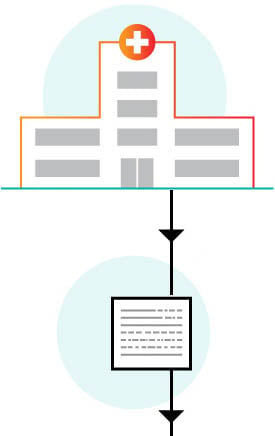 Think of all the different reasons we go to see a doctor. All that information must be translated into billing information. This billing information includes not only the charges for the services rendered, but also the medical billing coding (like, how the services are categorized).
Think of all the different reasons we go to see a doctor. All that information must be translated into billing information. This billing information includes not only the charges for the services rendered, but also the medical billing coding (like, how the services are categorized).
Then, billing information must be communicated to the insurance company, which has a contract with the healthcare provider (the doctor or the medical group the doctor works for). This contract varies from provider to provider based on criteria such as the size and specialty of the provider.
You've seen this behavior if you've ever had to change insurance coverage and your costs change when going to the same doctor.
How the doctor (provider) prepares this communication varies. But they either send a claim directly or just send a subset of the data that allows a claim to be created. While some larger providers can prepare a claim themselves, smaller providers are forced to gather and enter patient information to generate a claim.
Step 2: Clearinghouse Creates or Validates 837s
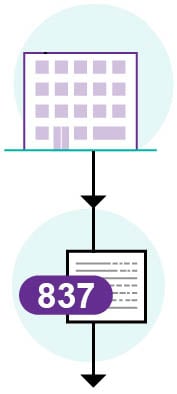 For example, smaller providers often have to use clearinghouses to help negotiate the claim / insurance process since the technology to create a health care claim might be too expensive. This first healthcare claim is an EDI 837 file (eventually). That's the file format the insurance company needs to respond to the claim.
For example, smaller providers often have to use clearinghouses to help negotiate the claim / insurance process since the technology to create a health care claim might be too expensive. This first healthcare claim is an EDI 837 file (eventually). That's the file format the insurance company needs to respond to the claim.
So, someone has to create an 837 file for claim submission to the insurance carrier (also known as the payor). A clearinghouse or the healthcare provider creates the 837 file. That file is then transmitted to the insurance company.
At this point, the insurance company analyzes the 837 file. They do things like:
- Verify the patient's coverage
- Check the claim for errors
- Determine payment
Step 3: Insurance Company Sends EOB Back to Patient and Provider
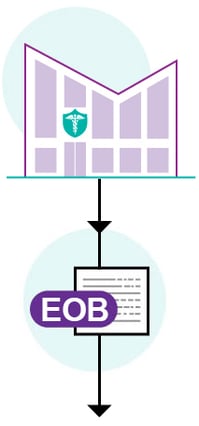 A summary of the insurance company's response to this claim and an Explanation of Benefits (EOB) document is generated and mailed to the patient. (The EOB shows a summary of the visit and what charges are due from the patient to the healthcare provider.)
A summary of the insurance company's response to this claim and an Explanation of Benefits (EOB) document is generated and mailed to the patient. (The EOB shows a summary of the visit and what charges are due from the patient to the healthcare provider.)
The insurance company also creates an 835 EDI file that includes payment to the provider. This 835 file may or may not be accompanied by an EOB file to the provider as well.
The insurance company bundles together payments for multiple patients and multiple services into one payment. The 835 or EOB is used as the remittance to explain what is being paid for.
Why is This Step Even More Complicated?
This is one of the most important and difficult parts of the entire revenue cycle process. If the provider can't automatically import 835 data into the provider's accounting system, inputting this information for reconciliation must be done manually.
If a payment was denied, this is where that reconciliation would happen as well. On a denied claim, the healthcare provider reviews the denial reason and determines if there were errors in the original claim, makes appeals, or resubmits the claim once any corrections have been made.
And the process repeats.
What are the Problems with the Healthcare Claim and Remittance Process?
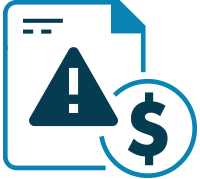 One of the biggest problems with this process is how long it takes.
One of the biggest problems with this process is how long it takes.
Several examples include:
- Patients wait months to learn what is and is not covered, and how much they owe above their co-pay for the services they received.
- Healthcare providers have to wait for insurance payments to be deposited into bank accounts — after the long process has been completed. Providers don't know how much a patient will ultimately owe until they get payment back from the patient's insurance company.
Why does this process take so long?
Mainly because healthcare billing is so complicated, and the many parties involved cause processing times to be extended. Any mistakes made during this process translate into longer delays. And back-and-forth negotiating between insurance companies and providers (and even the patient) is common.
The Nitty Gritty Work of Claims Processing
In addition, medical coding is a complex, three-dimensional problem. Insurance companies have detailed contracts with providers about what services they'll pay for, and how much they will pay. This all results from proper medical billing coding.
So if a claim is coded incorrectly, it causes problems through the rest of the process.
After a patient's visit, claim data and/or 837s are sent to healthcare clearinghouses. They create or convert healthcare visit information into an 837 format for insurance companies to use and load into their business systems.
(Traditionally, this part of the process uses manual data entry to create / convert and validate 837 files. This means it is slow, painstaking, and fraught with errors.)
And those errors cause even more delays. In fact, you have probably seen the results of those errors yourself.
For example, have you ever had an insurance company deny a claim only to resubmit it after you spoke to them? Of course, you have. That reconciliation is part of the problem. Medical coding and billing are exceptionally complex and ever-changing.
Solutions for Automatic 835 / 837 Conversion and Increasing Revenue
 Converting 835s, 837s, and EOBs by traditional means is labor-intensive and slow.
Converting 835s, 837s, and EOBs by traditional means is labor-intensive and slow.
But with document conversion solutions like Grooper, you will:
- Streamline workflows
- Greatly reduce manual data entry
- Decrease time to payment
- Maximize revenue capture
We help the biggest companies in healthcare data and EOB processing significantly improve their revenue cycle management, so we know how to help you as well. Stop suffering from long delays in posting 835s, which hurts your productivity and profitability.
How Do 835 / 837 Conversion Solutions Work?
Grooper is a software solution that is flexible enough to handle several parts of the revenue cycle. It can optimize your processing and significantly decrease the time and effort it takes to get processes done, such as:
- Converting physical document data into a standard XML format
- Validating 837
- Converting an EOB to a format that matches your accounting system
That leads to not only to streamlined workflows but also maximized revenue capture for you! Grooper now natively understands 835 and 837 files and can directly import these files and formats.
Contact us today to see how Grooper can help you revolutionize your healthcare revenue cycle management.
What are the Differences Between 835 vs 837 Files?
| 837 | 835 | |
| Meets HIPAA 5010 Standards: | Yes | Yes |
| Main Use: | Submit payment claims | Submit payments and remittance advice in response to 837s |
| Created By: | Healthcare provider | Payor / insurance company |
| Electronic Data File: | Yes | Yes |
| Contains: | Diagnoses, procedures, services performed, dates, claim amounts | Services paid for, denied, reduced, adjustments, deductibles |
What is an 835 File?
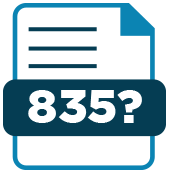 An 835 is also known as an Electronic Remittance Advice (ERA) file. These electronic data interchange (EDI) files contain claim payment information, and it documents the electronic funds transfer (EFT) in healthcare insurance.
An 835 is also known as an Electronic Remittance Advice (ERA) file. These electronic data interchange (EDI) files contain claim payment information, and it documents the electronic funds transfer (EFT) in healthcare insurance.
Put simply, an 835 is sent by payors (like insurance companies) back to healthcare providers (clinics, hospitals, or physicians) to provide information about the healthcare services that are being paid for, denied, reduced, or adjusted. Think of an 835 as an electronic receipt.
Healthcare insurance companies also use 835 files to make payments to healthcare providers and provide an Explanation of Benefits (EOB). 835 files can be used by clinics, hospitals, practices, and billing companies to post claim payments automatically into their accounting systems.
835s also contain additional information on deductibles, splitting or bundling of healthcare claims, and copay amounts.
You may have also heard of an 835 described as a transaction set or Healthcare Claim Payment and Remittance Advice.
What is an 837 File?
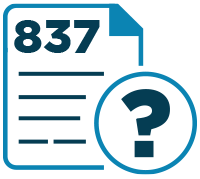 An 837 is an electronic data interchange (EDI) file that contains healthcare information, specifically about a patient's medical claim.
An 837 is an electronic data interchange (EDI) file that contains healthcare information, specifically about a patient's medical claim.
These files are the first that begin the healthcare insurance claims and remittance process. An 837 it is sent from the healthcare provider (hospital, clinic, facility, etc.) to the payor (insurance company). It's the electronic equivalent of the paper CMS-1500 or UB-04 form.
An EDI 837 file complies with HIPAA requirements and transmits healthcare claim data to an insurance company (or third party known as a clearinghouse) in place of the old-fashioned paper claim. One 837 file may contain not just one patient's claim but also multiple patient claims from that specific hospital or clinic to the payor.
These files contain many details of a patient's treatment, such as:
- Diagnosis
- Medical services provided
- Cost of treatment
- Actual claim amount
- Additional adjustments
There are three different 837 file format transaction groups: for institutions, for professionals, and for dental practices.
Need to automate your 835 EDI and 837 conversion?
Contact us here to discover how Grooper will help you transform your data processing and healthcare revenue cycle management!
About the Author: Tim McMullin
Tim McMullin brings extensive sales and solution design experience to help customers and partners successfully meet their business objectives.
With more than 25 years of technical and sales expertise in the enterprise document and data capture space, Tim is responsible for managing Grooper sales at BIS. His leadership focuses on the expansion of all things Grooper, especially the channel and traditionally underserved verticals.
